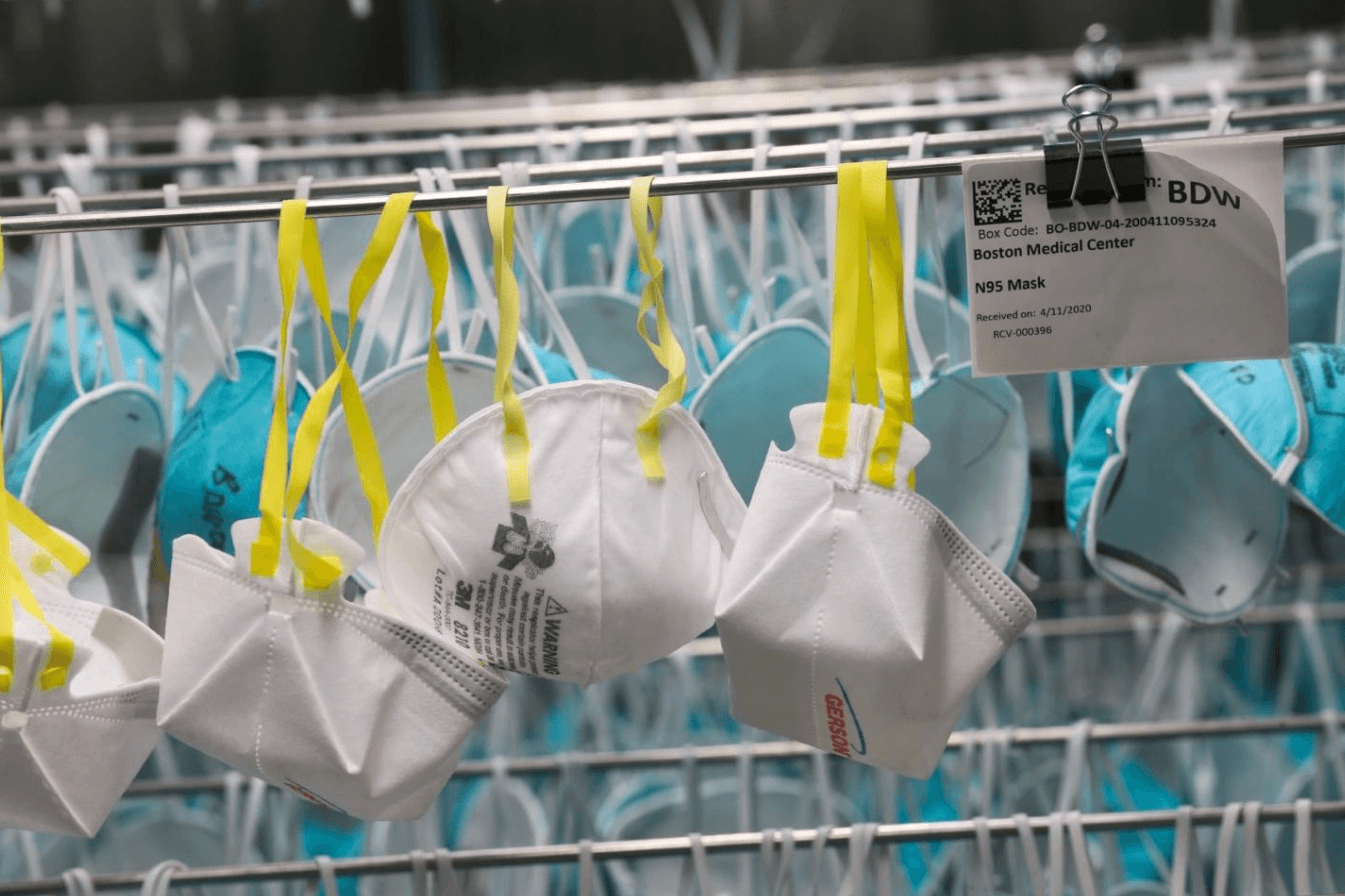During the years that the COVID-19 pandemic was murderously sweeping the world, it killed about seven million — more than 1.1 million in the U.S. alone. It upended lives, damaged national economies, and heavily stressed healthcare delivery.
One of the most visible responses was the introduction of universal masking, a measure designed to reduce SARS-CoV-2 transmission and, originally, to “flatten the curve” of cases and, thereby, hospitalizations and deaths.
With the end of the official public health emergency, the wearing of masks has dropped dramatically throughout the United States. When infection rates were high, masking made sense in medium- and high-risk situations, such as crowded or poorly-ventilated indoor venues. As the pandemic has wound down, masks are seldom seen, even under these circumstances.
Healthcare facilities are one of the last places left with COVID-era mask requirements still in place in most settings. Some have reverted to mandating masking in only very limited circumstances, e.g., when healthcare workers are caring for patients who have impaired immune systems or potentially contagious respiratory infections, or when they, themselves, are ill.
“[A]s a routine, even in patient care areas, it is now no longer obligatory,” said Dr. William Schaffner, a professor of infectious diseases at Vanderbilt University Medical Center in Nashville and medical director of the National Foundation for Infectious Diseases.
Although almost all physicians recognize the benefits of masking, some believe it can disrupt patient care. “[I]t’s no surprise that masking impedes communication. It also can obscure facial expression,” said Dr. Erica Shenoy, an infectious diseases physician at Massachusetts General Hospital (MGH) and Medical Director of Infection Control for Mass General Brigham. “While these are harder things to measure in terms of isolation or the impact it has on the human connection, those sorts of things are real and they have been documented in studies. And so, it’s not costless.”
Others believe that COVID cases are rare and treatable with more routine care. “The management of COVID is at a point where it can be considered alongside other respiratory viruses dealt with day in and day out, and universal masking is not something that has ever been indicated for those other respiratory pathogens,” said Dr. Amesh Adalja, a senior scholar with the Johns Hopkins Center for Health Security in Baltimore.

Strategic masking?
There are instances in which patients may have compromised immune systems or underlying health conditions that raise the risk of becoming infected and seriously ill. In those cases, masks are a critical barrier to prevent the transmission of airborne or droplet-spread respiratory diseases.
For several other reasons, I believe that forgoing wearing a mask even in some more routine healthcare situations is hasty and unwise. First, as noted in an article by four physicians at Harvard Medical School and associated institutions, hospitalized patients are different from non-hospitalized populations. Hospitals (and, to a lesser extent, outpatient facilities) accumulate people who are fragile and vulnerable because of acute and chronic illnesses. They are more likely than the general population to be older and to have comorbidities such as chronic lung, kidney, liver, or heart disease. The authors lobby for what they call “strategic masking.”
Second, as the authors point out that nosocomial, or hospital-acquired, infections caused by respiratory viruses other than SARS-CoV-2 are common, as are their adverse health effects in vulnerable patients:
Viruses can also cause substantial harm by exacerbating patients’ underlying conditions. Acute respiratory viral infections are well-established triggers for obstructive lung disease flares, heart failure exacerbations, arrhythmias, ischemic events, neurologic events, and death.
Third, another factor to consider is the phenomenon of “presenteeism” in healthcare workers — coming to work despite feeling sick. Although they should know better, it is common. According to the Harvard group:
Even during the height of the pandemic, some health care systems reported that 50% of staff diagnosed with SARS-CoV-2 worked while symptomatic. Studies from both before and during the pandemic suggest that masking among health care workers can reduce nosocomial respiratory viral infections by approximately 60%.
Moving too quickly to unmask?
There are already numerous examples of the negative effects of the abandonment of masking. On April 3, California public health officials lifted the requirement for masking in healthcare facilities and within three weeks, Kaiser Permanente Santa Rosa reinstated its masking requirement after an outbreak of COVID in more than a dozen staff members and an unspecified number of patients.
And in Japan, a month after the government downgraded COVID-19 to a status on par with that of seasonal flu, which resulted in less public vigilance about masking and other precautions, the country experienced a COVID-19 surge. The number of new infections increased to almost double the level seen before the downgrade, according to health ministry statistics.
Moreover, over the past several weeks, we have been seeing a slight uptick in SARS-CoV-2 levels in wastewater surveillance in the Southern, Northeastern, and Western regions of the U.S., as measured by Biobot Analytics. Johns Hopkins University infectious disease epidemiologist Caitlin Rivers thinks this could presage a mid-summer surge.
The Harvard group’s article on masking concludes:
[M]asking in health care facilities continues to make sense. Masks reduce respiratory viral spread from people with both recognized and unrecognized infections. SARS-CoV-2, influenza, RSV [Respiratory Syncytial Virus], and other respiratory viruses can cause mild and asymptomatic infections, so staff or visitors might not realize they are infected, yet asymptomatic and presymptomatic people can still be contagious and spread infections to patients.
Adapting to local conditions or ‘play it safe’?
The Harvard authors also suggest that healthcare facilities might wish to adjust masking requirements according to the level of viral infections in the local community. I think that is overly optimistic and puts healthcare workers at unnecessary risk, if an impending surge were to be missed.
One often-ignored factor is that physicians and nurses have been disproportionately frequent casualties of COVID, not only of acute infection but also of long-term sequelae. The British Medical Association recently published the results of the first comprehensive survey of doctors with post-acute COVID health complications, often referred to as “long Covid.” More than 600 doctors suffering the continuing effects of COVID infection were asked about the impact the condition is having on their health, daily lives, employment and finances. Forty-eight percent said that COVID sequelae had affected their income and that they had been forced to stop work or significantly cut back on their hours. This is damaging not only to the individuals involved but also to the resilience of healthcare delivery going forward.
I would opt for a more conservative approach than that recommended by the Harvard authors. For the foreseeable future, instead of trying to titrate mask requirements according to increasingly less-available data, I would err on the side of more masking in both inpatient and outpatient settings. It is effective, inexpensive, not terribly inconvenient, and applicable to prophylaxis of airborne and droplet-spread infections in addition to COVID. Most important, it is in the best interest of staff, patients, and public health.
Henry I. Miller, a physician and molecular biologist, is the Glenn Swogger Distinguished Fellow at the American Council on Science and Health. He was the founding director of the FDA’s Office of Biotechnology. Find Henry on Twitter @HenryIMiller































